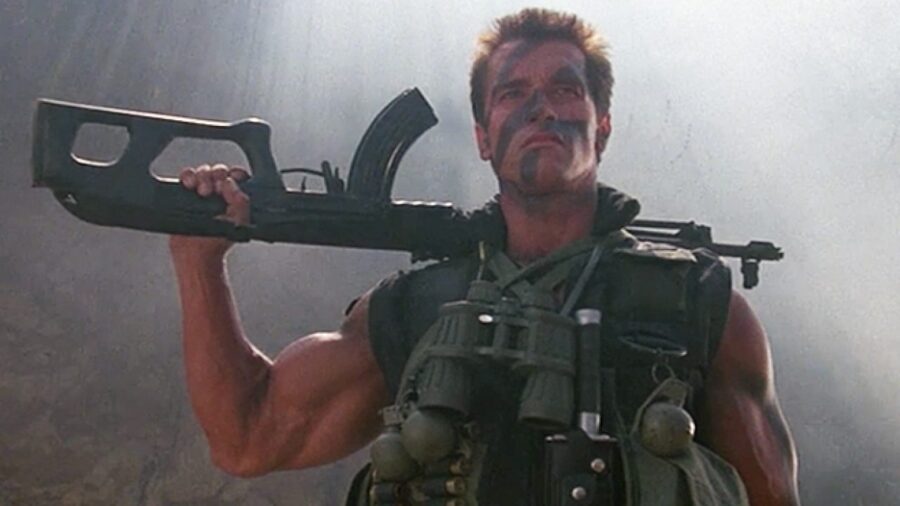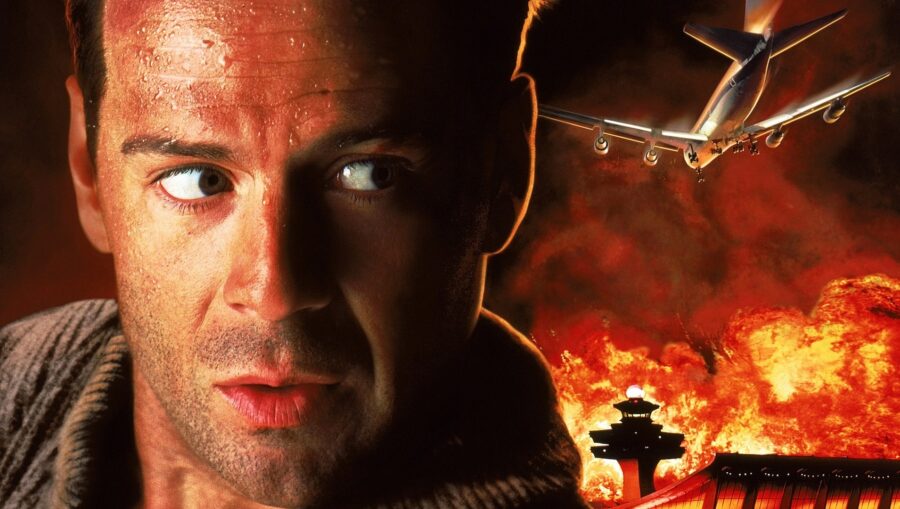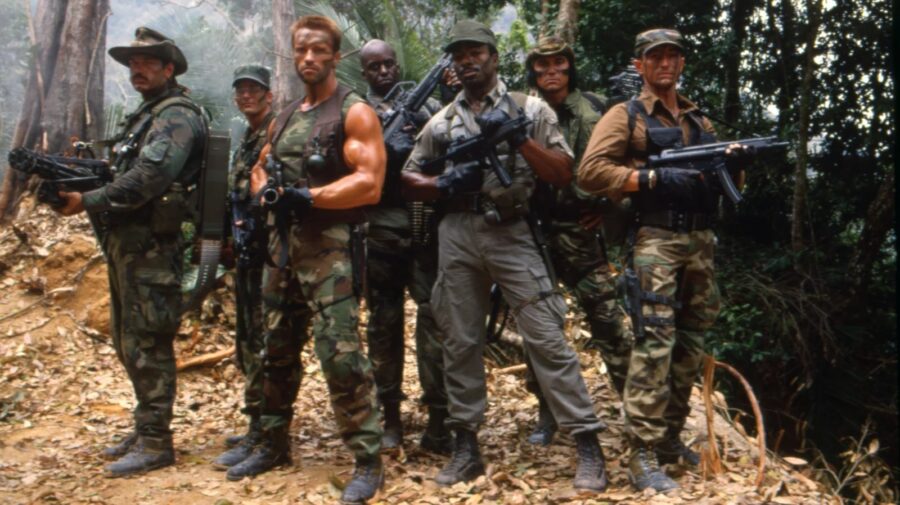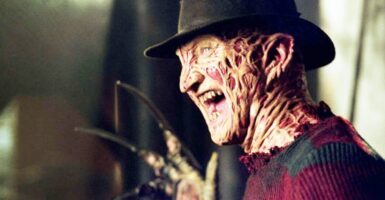The Best Cinematic Universe Is One You Didn’t Even Know Existed

Thanks to the success (perhaps we should start saying former success) of the Marvel movie formula, both studios and audiences are obsessed with the idea of cinematic universes. It’s not hard to see why: if the onscreen heroes are a bit like celluloid toys, then shared universes are a way fans get to enjoy playing with everything in the toybox. But the best cinematic universe is one most fans don’t know exists: the “Val-Verde-verse,” which ties together properties like Commando, Die Hard, NCIS, and so much more.
Starts With Commando

We know what you’re saying right now…just what the heck could connect worlds as different as Die Hard and NCIS?
It all starts with a fictional country named Val Verde that was created by Steven E. de Souza. He kicked off the Val-Verde-verse with the 1985 movie Commando, though he was less interested at the time in creating a cinematic universe and more interested in not getting sued.
Val Verde Stuck As A Country

While writing Commando, de Souza needed to come up with some country located in either South or Central America. This country was going to be home to a corrupt dictator that Arnold Schwarzanegger’s character was sent to assassinate.
Knowing that using a real place could cause potential diplomatic or legal hassles for himself or (more realistically) the studio, de Souza created Val Verde for the country, and he would keep using it for many of his other works.
Val Verde Comes To Die Hard 2

On the big screen, the next appearance of the Val-Verde-verse was in the 1990 film Die Hard 2. Much like with Commando, de Souza had to come up with a good home country for the evil General Ramon Esperanza.
Embracing a real “if it ain’t broke, don’t fix it” attitude, he used Val Verde for that character’s original home.
Two years before Die Hard 2, de Souza brought his weird cinematic universe to the small screen. In the fifth episode of the mostly forgotten television show Supercarrier, de Souza had the USS Georgetown docking at Val Verde directly before the outbreak of a civil war.
In 2003, he made the similarly forgotten show Adventure, Inc. part of the Val-Verde-verse by naming the 10th episode “Plague Ship of Val Verde,” and he later set his comic book Sheena in this fictional country.
Predator Set In Val Verde?

As for Steven E. de Souza, that’s it for his own contributions to the Val-Verde-verse, although he set the nerd world on fire when he later claimed that he thought the movie Predator was set in Val Verde.
Later entries in that franchise specified the movie was set in Guatemala, but if you believe de Souza’s fannish speculation, that would connect other franchises to this cinematic universe, including Alien and Blade Runner.
However, even if we discount de Souza’s weird speculation, plenty of other franchises that he never worked on are connected to the Val-Verde-verse through references.
Also Part Of NCIS

For example, Val Verde is a part of Paraguay in the NCIS episode “Rendezvous,” and part of the excellent Hank Green novel is set in this fictional country. The country also appears in the fun-but-forgettable shlock films Jurassic Attack and Commando Ninja. It even appears in video games such as the 2015 title Broforce and the recent game Contra: Operation Galuga.
Still More Examples?

Believe it or not, these are just a few of the properties connected to the Val-Verde-verse…we haven’t even talked about how Ricochet connects to Die Hard (Mary Ellen Trainor plays the same character) or how a single Easter egg (the use of Pacific Courier company) arguably connects Speed to Die Hard, where the courier first appeared.
Heck, by the time you’re done reading this, fans will have likely found another reference (or two, or three) to this fictional country.
Arguably, this is the most ambitious and interconnected cinematic universe ever created. Hilariously enough, we owe it all to the fact that a young de Souza didn’t want to offend anyone by using the name of a real country at the home of his fictional villains.












